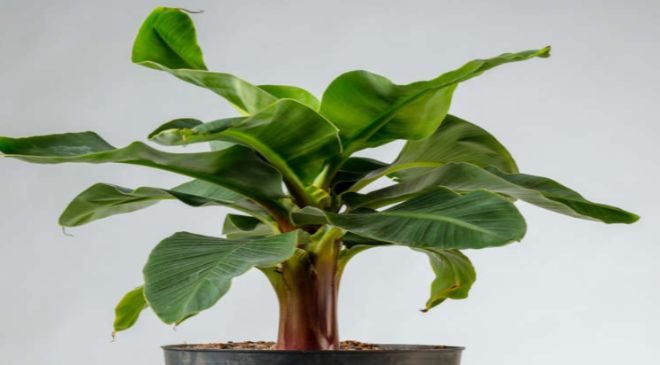Why Throw Out Healthy Plants?
Plenty of gardeners place their houseplants outdoors for the summer and enjoy them indoors the rest of the year. So why not try a similar strategy—and save a little money while you’re at it—by bringing your favorite cold tender plants inside when the temperature drops so they’ll be ready to shine again when summer rolls around?
Before you bring your outdoor plants in for the winter, you’ll need to do a bit of preparation. Start by inspecting them for pests and treating, if necessary. Repot if a plant needs it, and cut down on (or eliminate) fertilizing. Some plants can simply be brought indoors as houseplants, others should be forced into dormancy for a few months of cool storage, and still others are best kept going by making rooted cuttings. Read on to learn about 10 popular cold tender plants that you can bring inside each winter and then continue to enjoy outside for many summers to come.
Palms
While some palm trees are hardy in the winters of the Deep South, most palms should be overwintered inside. Do not leave them exposed to freezing weather. When overnight temperatures drop to the 50s, move palms to an indoor location that gets lots of light. Water them regularly to keep the soil moist until spring, and carry them back outdoors after all danger of frost has passed.
Cacti
Leave cacti and succulents outdoors as late into the season as possible so that the combination of shorter days and cooler nights will stimulate a dormancy response. You’ll need to keep an eye on the thermometer and know the low temperature threshold for your particular type of cactus. Some species may be able to withstand 20-degree temperatures, but others cannot. In general, cacti do best in a cool, even unheated, bright location with minimal water. Transition them back outside in early spring.
Citrus
Citrus trees actively grow and flower—and may also ripen fruit—in winter. Carefully move them into a brightly lit room, ideally kept between 55 and 70 degrees Fahrenheit, before freezing weather arrives. Citrus plants are sensitive to the drying effects of air, so it’s best to position them away from heat vents and cold drafts. Provide supplemental humidity with a pebble tray or regular misting.
Tropical Hibiscus
Move tropical hibiscus plants indoors when overnight temperatures reach the low 50s. Place them in a brightly lit room, and treat them like regular houseplants. Keep the soil moist but not saturated, and feed them regularly. Try to avoid heat vents and cold drafts, and put the plants on a pebble tray to boost the ambient humidity, if necessary. Prune tropical hibiscus three times during late fall and winter (October, December, and February) to maintain the shape.
Jasmine
Prune jasmine vines by at least 25 percent before bringing them in for winter. Doing so will save space in your home and reduce the energy the plant spends to maintain itself. Be forewarned: Leaves will probably fall off, maybe all of them, but new ones will grow again in time. Bring jasmine into a sunny room before frosty weather arrives, and keep it away from drying air vents and drafts. Use a pebble tray to boost humidity to about 30 percent
Elephant Ears
When cool weather approaches and the foliage dies back, carefully dig up your elephant ear tuber. Remove any remaining foliage, and gently rinse off excess dirt. Place the tuber in a warm, dark location with good air circulation to dry out for a few days. Wrap the bulbs in paper and store them in a cool, dry place. Check them periodically for rot (throw rotten ones away) and insect damage (treat with an insecticide).
Boston Ferns
It is technically possible to bring Boston ferns inside the home and overwinter them in their active state, but it gets very messy very fast. Instead, let them go to sleep. Put them in a cool, dark location that will not freeze—for instance, an unheated basement or garage—and moisten the soil monthly until spring
Geraniums
Geranium is another plant that likes to sleep the winter away. Dig the plants out of the ground before the first freeze, and gently knock the soil off the roots. Allow the plants to dry in a cool, shady location for a couple of days. Place the plants upside down in a paper bag and close the top. Store them in a cool, dark location that stays between 55 and 60 degrees. About 2 months before the last frost date, trim the stored geraniums and plant them in moist potting soil with two leaf nodes below the soil line.
Angel’s Trumpet
Bring potted angel’s trumpets inside to a cool, dark area when frosty weather approaches. The leaves will fall off and the plant will go dormant. Keep the soil barely moist until spring, then move the plant outside again when all danger of frost has passed. To move in-ground plants indoors, dig them up and pot them, or you can cut them to the ground in the fall to make rooted cuttings for planting out next spring.
Banana
Although Musa basjoo, Musa lasiocarpa, and a few other banana trees are quite cold hardy, most will not tolerate extended freezing temperatures. Potted banana plants can be brought indoors to a bright, sunny room to spend the winter in a slowed active state. Or, you can help them sleep through winter: As the weather cools, gradually reduce watering. Then, before the freeze, cut the plant to 6 inches in height and move it to a dark, cool location. Keep the soil barely moist until the weather warms in the spring.









































